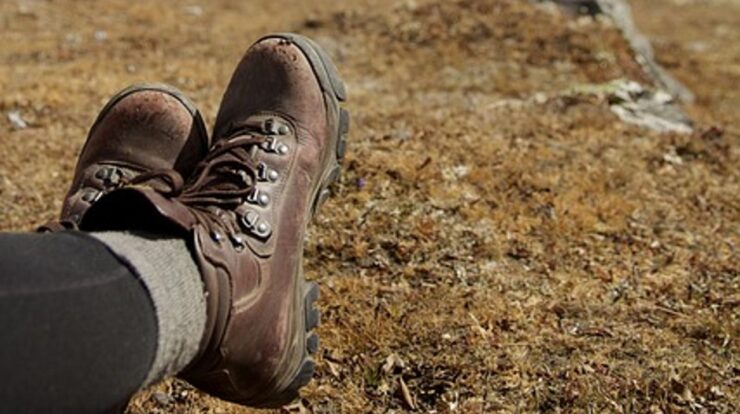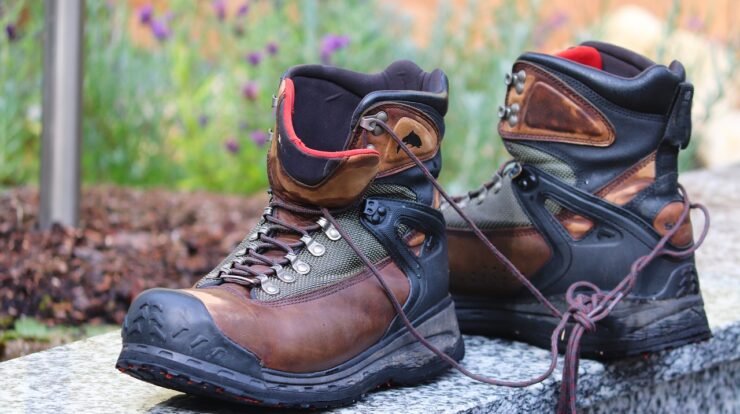
When you are diagnosed with diabetes, you will be sent along to the foot clinic to be advised on foot care.
Diabetic footwear is no longer just shoes and socks because now there is an amazing range of supportive sandals available for you to wear.
If you have developed neuropathy these sandals for diabetics are just what you have been looking for as they protect your feet and keep them safe while giving you the stability you need to walk around.
Because the circulation in the diabetic’s foot becomes restricted you need the best sandal you can get, to make sure you avoid blisters and ulcers from occurring.
What are Sandals
A sandal is a supportive shoe with an open top. This will allow the air to circulate around your feet while still allowing the underneath of your foot total support and stability, so this makes getting the right sandal for you important.
The soles of the sandal can be made of rubber, leather, rope, or cork making them ideal for summer. Don’t buy flip-flops as these are too lightweight to offer support to your foot.
Are Sandals Good For People with Diabetes
Yes, sandals are great for people with diabetes, because they breathe, and control foot moisture levels, preventing fungal infections from setting in.
Once you are a diabetic you are advised to always put on footwear when outdoors, and this is the best way to remain cool in hot weather by purchasing a selection of good quality sandals that you feel really comfortable when wearing.
The right diabetic sandal offers the foot more support by reducing both friction and stress to the foot, and not allowing any rubbing to the skin.
What Type of Sandals is Good for Diabetics?
There are different types of sandals available, with different heels in many different materials including, leather, rope, canvas, and wood.
Therapeutic Sandals
Some therapeutic sandals offer acupressure foot massage, this is not the best idea for diabetic patients as it may deliver uneven pressure to the sole of the foot, depending on how you walk.
A therapeutic sandal with a flat sole is preferable and this should offer a level of comfort not available in a running shoe.
Orthopedic Sandals
These offer the best support to the diabetic patient. They usually have a multi-layer construction including an insole. They support the arch while aligning the body and feet, keeping the feet in a neutral position.
When you get the right pair fitted, you will feel as though these are the shoes designed for you. They offer total comfort to the wearer.
When you are choosing whether to wear an Orthopedic sandal or a Therapeutic sandal, make sure that it is comfortable and easy to walk in. You want the interior to be soft and to protect your feet when you are out.
If you are going to be on your feet all day, you have to be really certain that your sandal is fit for purpose, as any rubbing or discomfort can cause damage to the diabetic foot.
When you get home, take your sandals off and soak your feet in lukewarm water, or use your foot massager, as a lot of walking can tighten up your foot muscles.
How to Choose a Pair of Good Sandals for Diabetics
The most comfortable sandal for your feet should be flexible and lightweight. If you have problem feet the range of sandals is not always state-of-the-art fashion to look at but don’t judge them until you try them on.
The feeling of total comfort will often change your opinion. You often find you need something with grip and traction for summer walks along the beachfront.
Your diabetic sandal should be available in different widths, medium wide, and extra wide for a better fit and protection and include.
- Hard outsole
- Cushioning
- Adjustable closure, for days when your feet are slightly swollen.
- A smooth interior, with no rough edges.
- A solid heel.
- Wide toe area.
- Breathability
- Antimicrobial properties if possible.
- Removable insoles
- Orthotic insole
If you are diabetic it is not advisable to go barefooted, so wearing a good sandal is the next best thing for your feet.
Even indoors walking barefoot can mean that you step on small objects and if you tread on anything sharp you may not immediately be aware of it. Unfortunately, a diabetic cannot take the risk of walking with bare feet, as they may not recover from a foot wound for many months.
Sandals for Diabetics Men
Whether you are a diabetic woman or a diabetic man you are going to have similar needs in footwear. Men often ignore comfort, but of course, the need for comfortable and safe footwear is equally important for them.
Because many diabetic feet heal more slowly and are extra sensitive to heat and friction and any type of injury, foot protection and comfort are always important. The need to wear sandals in summer should not be sacrificed because you are diabetic.
Many shops carry a range of men’s sandals that are suitable for the diabetic man. They are designed to protect the feet and help the circulation while mitigating any nerve damage to the feet. Before you go along to purchase your summer sandals get some recommendations from your own foot care specialist or podiatrist as to what best suits your feet, as they will know what is suitable for you.
Peripheral Neuropathy requires Comfortable Sandals for Diabetics
If you are suffering from painful peripheral neuropathy it is caused by nerve damage caused to your feet and lower limbs by your diabetic condition.
Poorly controlled blood glucose levels lead to nerve damage over a period of time, and this, in turn, leads to painful neuropathy. or a feeling like pins and needles in your extremities, making the need for the right footwear even more important.
Sometimes the tingling in your feet doesn’t get any worse, as now your blood glucose may be under control, but often the feeling in your feet may not be as good as it once was, and your specialist doctor will test this out while you are in the surgery to see how much feeling there is in your feet.
A nerve conduction velocity test (NCV) is sometimes used for the diagnosis of the level of feeling. Damaged nerves don’t transmit messages quickly and this is what the test is based on.
About 50% of diabetics will develop neuropathy, and this is quite a high number. All of these people will require the best foot care and correct footwear.
Although neuropathy can affect any nerve in the body, it most commonly affects the feet.
Most people with diabetic neuropathy don’t know that they have it. Early diagnosis will improve outcomes and quality of life.
Prevention of Diabetic Neuropathy
There are a few things you can do to avoid neuropathy, and the first thing is to look after your feet by purchasing the best footwear and sandals for diabetics. Other things are:
- Maintain blood glucose levels within the recommended range.
- Exercise
- Maintain weight in the healthy range.
- Don’t smoke, every time you draw on a cigarette the temperature in your big toe falls by 1 degree. This means smoking impedes circulation.
- Keep your blood pressure down.
- Have regular medical checkups with your Doctors.
- Attend regular podiatry appointments.
- If you have pain in your feet tell your doctor, some medications are available.
Regular Aerobic Exercise
People with diabetes should perform regular aerobic exercise, aim for 30 minutes a day and always wear the right footwear.
It is interesting to know that regular exercise helps the insulin in your body to work better, also aids blood sugars to stay lower.
If you find 30 minutes too long, you can break your exercise into three sections, this will also help you to maintain a healthy weight. Swimming is another good exercise for diabetics.
Foot Care and Exercise
Sandals for diabetics are important when going along to the pool, unfortunately, fungus thrives in a warm pool environment so a special pair of rubber sandals for diabetics are needed to avoid walking on any common areas, including when in the shower.
Always check the state of your feet carefully following any form of exercise.
Take some extra carbohydrates along on your exercise routine, to prevent hypoglycemia, and drink plenty of fluid. Sometimes you need to adjust your insulin dose before regular exercise.
If you are a newly diagnosed diabetic, take exercise slowly, as it is hard to manage an exercise routine while your condition is being stabilized.
Best Sandals for Diabetics Conclusion
If you are getting used to being a diabetic it is important to get all the right footwear sorted out, as your feet are one of the most important things to protect.
You will need normal shoes, running or exercise shoes and the best sandals for diabetics. Wearing the correct footwear is an early lesson in diabetic management, and there are a lot of experts to provide you with the right advice around footwear.






